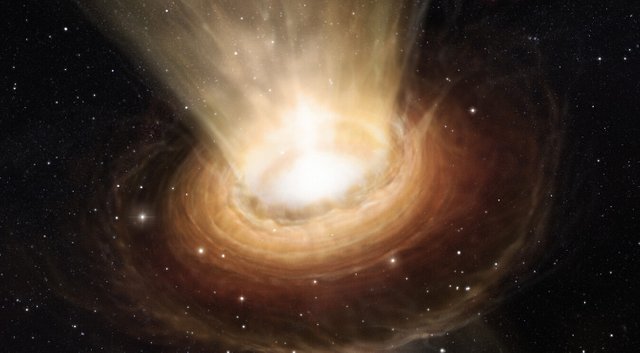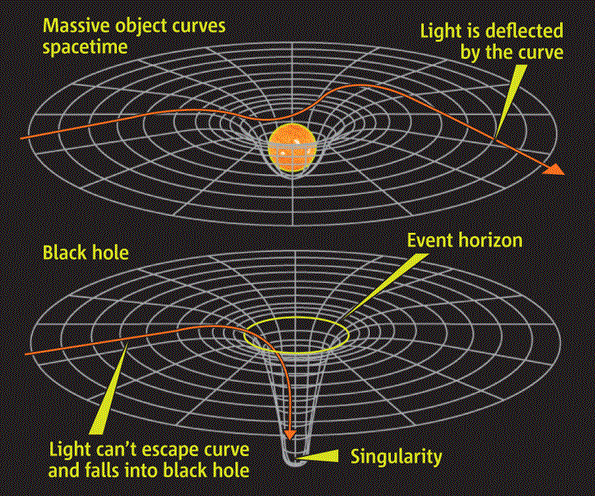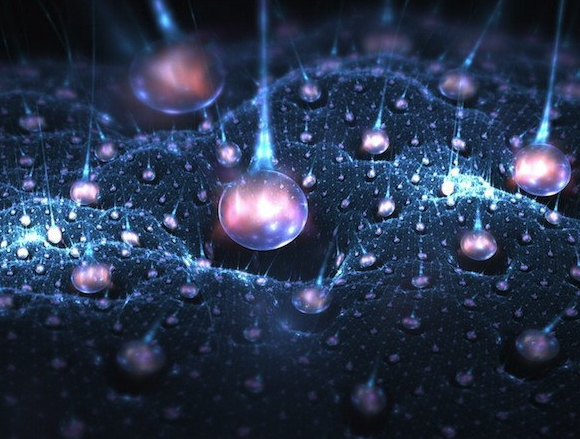
Most people have heard about black holes due to their fascinating and mysterious nature, but perhaps they have never heard of a white hole. To explore both (which is essential, because they are intimately connected), we must first briefly cover the very basics of theoretical physics.
Back in 1915, world-renowned scientist Albert Einstein developed a theory called general relativity. This particular theory is universally recognized in the field as the predominant hypothesis that provides a unified description of gravity as a geometric property of both space and time (or spacetime ). This is important and relevant to black holes and all objects that hold considerable mass (such as planets and stars) because it shows gravity has an impact on the motion of light.
Although black holes themselves are not visible to the naked eye or even powerful telescopes, we pretty much know they’re out there. Since a black hole’s defining feature is its event horizon, or in other words its “boundary,” astronomers are able to detect the location of one due to the passing of surrounding light and matter inward towards its singularity. General relativity predicted this far before it was actually observed:
“The presence of a mass deforms spacetime in such a way that the paths taken by particles bend towards the mass.”
It is often said that nothing, not even light, can escape once it has passed the “point of no return” (i.e. the event horizon).

Credit: https://www.quora.com
White holes
Like we mentioned before, most have probably never heard of a white hole and there’s a good reason for that: it’s purely hypothetical at this point. That said, a gamma-ray burst dubbed ‘GRB 060614‘ located 1.6 billion light years away in the constellation Indus was detected in 2006 by the Swift satellite. In 2011, some hypothesized this GRB may have been the first white hole ever witnessed.
Introduced in 1964 by Russian Cosmologist Igor Novikov, white holes, through the maximally extended Schwarzschild solution, seem to possess some synonymous qualities with black holes (e.g. event horizons), though even a condensed version explaining the mechanics of a white hole can be a bit confusing:
“[To an outside observer], infalling particles take an infinite time to reach the black hole horizon infinitely far in the future, while outgoing particles which pass the observer have been traveling outward for an infinite time since crossing the white hole horizon infinitely far in the past (however, the particles or other objects experience only a finite proper time between crossing the horizon and passing the outside observer).”
“The black hole/white hole appears ‘eternal’ from the perspective of an outside observer, in the sense that particles traveling outward from the white hole interior region can pass the observer at any time, and particles traveling inward which will eventually reach the black hole interior region can also pass the observer at any time.”
Fecund Universes
Although Novikov was the first to point out that general relativity permits the existence of white holes, perhaps the most interesting explanation, which also includes both white and black holes, occurred in the late 1980s.
According to Wikipedia:
“Some researchers have proposed that when a black hole forms, a big bang may occur at the core, which would create a new universe that expands outside of the parent universe.”
Yes, you read that right!
This multiverse theory, called “Fecund Universes,” was developed by American Theoretical Physicist Lee Smolin:
“In this theory, collapsing stars, or black holes, are always creating new universes with slightly different laws of physics. Because these laws are only slightly different, each is assumed to be like a mutation of the original universe, as if each universe was a kind of single-celled organism. It would reproduce by ‘splitting’ in some sense.”

Credit: https://www.quora.com
The Einstein–Cartan–Sciama–Kibble model could support Smolin’s train of thought. Essentially, it states according to general relativity, the gravitational collapse of any adequately compact mass will ultimately form a singular black hole. From what experts have observed over the years, only stars can contain such a mass, although “mini-black holes” that are presumably smaller than an atom and behave quite differently than their behemoth counterparts are thought to exist – even here on Earth.
Spin, torsion, spacetime torsion and the big bounce
Inside Science posted an article titled ‘Every Black Hole Contains a New Universe’ which further explains how both the Einstein-Carton and Smolin theories could be close to explaining the creation of not only our universe, but possibly others as well:
“This variation of general relativity incorporates an important quantum property known as spin. Particles such as atoms and electrons possess spin, or the internal angular momentum that is analogous to a skater spinning on ice.”
“…Spins in particles interact with spacetime and endow it with a property called ‘torsion.’ To understand torsion, imagine spacetime not as a two-dimensional canvas, but as a flexible, one-dimensional rod. Bending the rod corresponds to curving spacetime, and twisting the rod corresponds to spacetime torsion. If a rod is thin, you can bend it, but it’s hard to see if it’s twisted or not.”
The article’s author, Nikodem Poplawski, goes on to connect-the-dots between spacetime torsion (which is a component of white holes as we understand it), black holes and the early universe. He explains how spacetime torsion contains a repulsive force attribute that counteracts the gravitational force coming from spacetime’s curvature as the result of a star that collapsed into itself, thus forming a black hole:
“Initially, the gravitational attraction from curved space would overcome torsion’s repulsive forces, serving to collapse matter into smaller regions of space. But eventually torsion would become very strong and prevent matter from compressing into a point of infinite density; matter would reach a state of extremely large but finite density. As energy can be converted into mass, the immensely high gravitational energy in this extremely dense state would cause an intense production of particles, greatly increasing the mass inside the black hole.”
With the increase in mass comes an increase in the number of particles that spin. This would directly affect spacetime torsion, which would eventually create a “big bounce” effect:
“The rapid recoil after such a big bounce could be what has led to our expanding universe. The result of this recoil matches observations of the universe’s shape, geometry, and distribution of mass.”
Endless possibilities
If this theory is correct, it would lead us to believe that every black hole ever created since the beginning of our universe possesses or possessed this torsion mechanism, thus resulting in a white hole big bounce-effect in a new universe that rapidly expands, much like our own.
That said, how many other black holes appear in each and every new universe created by their parent black hole / white hole, continuing the cycle? “An astronomical amount” might not be a sufficient enough answer.
Perhaps even the smartest minds on Earth would not be able to fathom the exact number, which could in fact be infinite.
Main image credit: https://www.extremetech.com